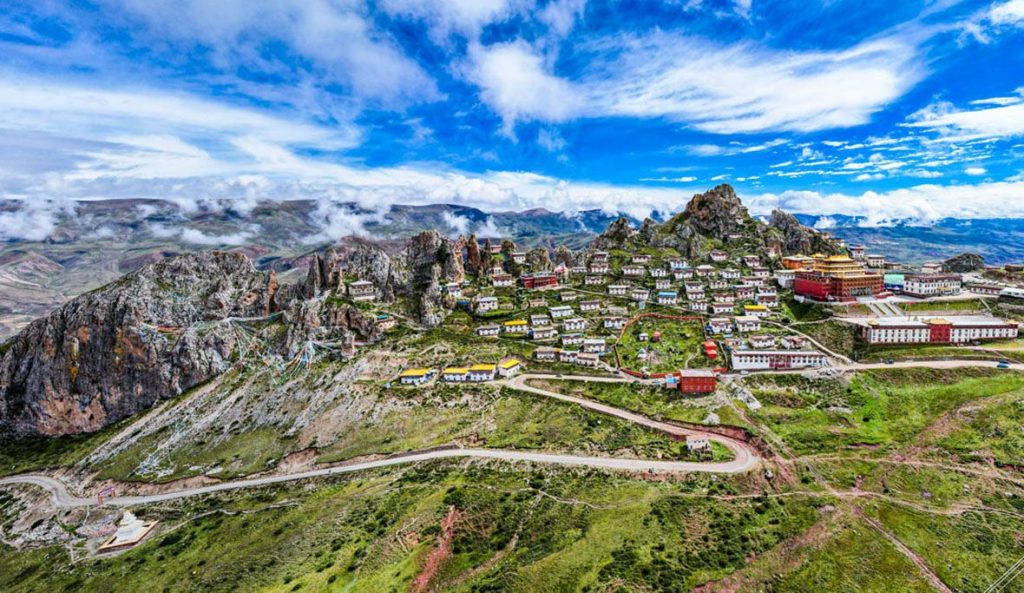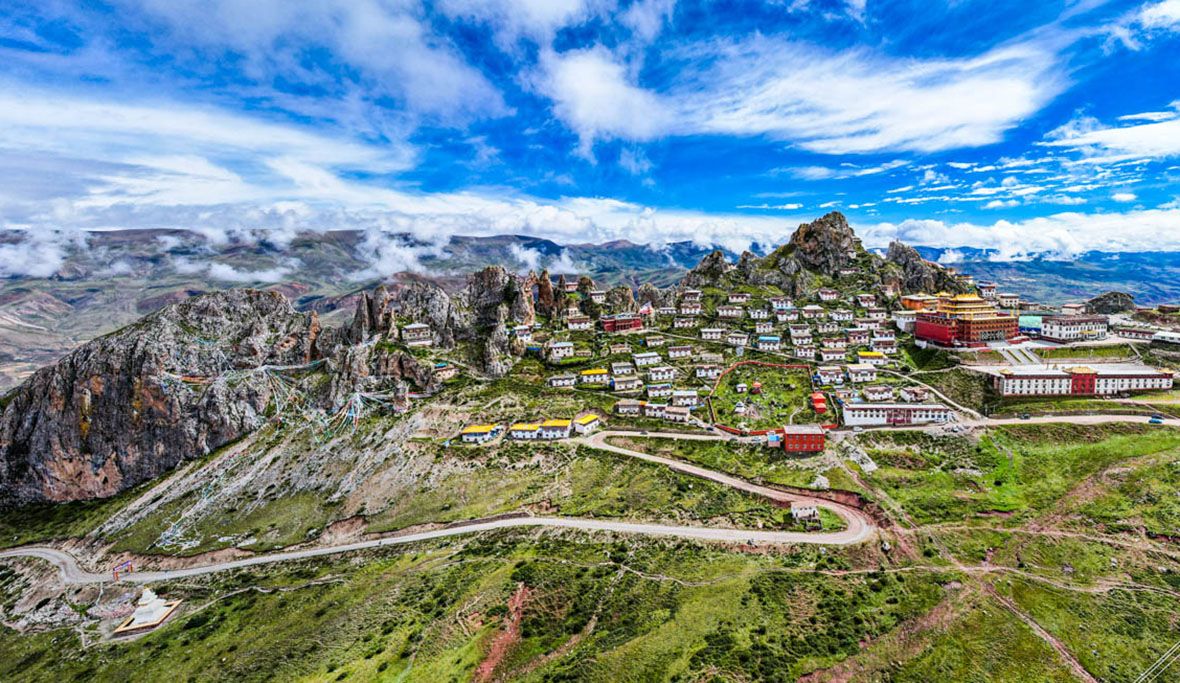
If you come to visit Tibet, in addition to appreciate the snow-capped mountains, glaciers, grasslands, and canyons on the roof of the world, the most important thing is to experience the profound Tibetan culture. To experience the Tibetan culture, the ubiquitous religious sites in Tibet have to be mentioned, the famous Potala Palace, Jokhang Temple, Sera Monastery, Samye Monastery, Tashilhunpo Monastery, Sakya Monastery, Zizhu Temple and so on are the classic representatives of Tibet religion.
There are famous monasteries in almost every region in Tibet, and they have a long history, a deep culture deposit, each with distinct features of its own. Located in Qamdo, there are two monasteries that must be introduced, one is the 600-year-old Galden Jampaling Monastery; the other is the oldest Zizhu Temple introduced in this article.
Zizhu Temple is located in Dêngqên County, Qamdo. Dêngqên means table land in Tibetan, it was called Qiongbu in ancient times. The county covers only nearly 13,000 square kilometers, but has a population of less than 100,000, Dêngqên County is a vast and sparsely populated place. Dêngqên County is located on the upper part of the Nujiang River, National Highway 317 goes through the boundary lines, Dêngqên County is the west gate of Qamdo and is also the hometown of the famous Cordyceps sinensis, Zhangzhung culture and Reba art.
Zizhu Temple is named after Zizhu Mountain. Zizhu means six peaks in Tibetan, so Zizhu Mountain is a small group of six mountain peaks. Standing on the opposite observation deck, we can see six mountain peaks standing in one line.
According to local friends, Zizhu Mountain is one of the four sacred mountains of Bon religion and has a profound influence on the development of Bon religion. The status of Bon religion is very important in Tibetan ethnic areas for thousands of years. There are handprints and footprints left by meditating monks, as well as Buddha statues, mandalas, mantras and so on everywhere in the ascetic cave on the rock walls.
It is said that these mountain peaks were called Crystal Mountain, not Zizhu Mountain before. The main components of the rocks on the mountain are high-quality stalactites and crystals that contain precious medicinal materials Shizhonghuang, which has extremely high medicinal value. Tibetan medicines are very abundant, among them stalactites, Shizhonghuang, Cordyceps sinensis, Gentiana algida etc. are not only enriched, but also top quality. Therefore, Zizhu Mountain is also known as a treasure house of medicinal materials beneficial to all living beings.
Zizhu Mountain is different from many mountain peaks in Tibet. The mountain is extremely steep, and the two sides of the mountain are like two worlds, they are completely different geological landform, one side is a typical Danxia landforms, the other is a typical Alpine grassland terrain. These peaks appear in an endless variety of shapes, some are like dragons that have wings, some are like lions, some are like elephants, and some are like birds. Moreover, there are many caves in these mountains, these cave are said to be the spiritual practices place for eminent monks. Among them, the famous ones are 108 caves.
Zizhu Mountain is one of the four sacred mountains of the Bon religion. In the 10th century BC, the second-generation Tibetan king Mu-khri btsan-po had built 37 Bon Taoist temples in various places in Tubo, and Zizhu Temple was one of them. Added all up, it has a history of more than 3,000 years.
Zizhu Temple has been brilliant for thousands of years, and was basically unaffected by the war, it was severely damaged only in the 1960s and 1970s, it was restored under the auspices of the local living Buddha in 1982, many holy objects were protected by the pious believers and gradually returned to the temple. Zizhu temple building and religious ceremonies have been restored. After decades of hard work, the current Zizhu Temple has restored three schools, there are already more than 200 monks.
Zizhu Temple belongs to the oldest Bon religion in Tibet, Bon religion is an ancient and primitive religion that prevailed before Buddhism was introduced into Tibet.
There is a viewing platform on the opposite side of Zizhu Temple, we can see the whole view of Zizhu Temple. According to the introduction of local friends, Zizhu Temple can be divided into Neiming College, Larung College, Datsan College, Unsullied Achievement Buddha’s Hall, and Buddhist Meditation College. Neiming College is mainly a place to study religion, Datsan College is a place to debate buddhist scriptures, Meditation College is a place for lamas to Buddhist practice, and Larung is the place where living Buddha of all ages lived, Unsullied Achievement Buddha’s Hall is the main hall of Zizhu Temple, a lot of Buddha statues are enshrined here, most of them are the top national treasures of China, unfortunately it is not allowed to take photos here, so you see this group of photos, they are basically outdoor scenes.
The most conspicuous building located in the center is Unsullied Achievement Buddha’s Hall, which is also the most conspicuous and grandest building in the entire Zizhu Temple. The first floor of the hall is about 7 meters high, carved beams and painted rafters inside the hall, around the hall are decorated with figures of Zhangzhung culture, in using pure manual natural pigments drawn, very exquisite, there are twelve large cinnabar pillars that lead directly to the third floor from the first floor in the center of the main hall, the 12-meter-high Buddha statue on the right side of the hall, their whole body are plated (with gold) and inlaid with all kinds of rare jewels and precious stones.
Up to more than 4800 meters above sea level, Zizhu Temple is the highest and oldest monastery in Tibet. There were no roads to reach Zizhu Temple before, ordinary people could not go there, only those great endurance people can climb it. Zizhu mountain is swathed in cloud all the year round, many people have a hard time climbing up to the mountain and still cannot see the true face of Zizhu Temple, therefore, it gives people a very mysterious feeling. Without predestined relationship, it is hard to see the Castle in the Sky.
